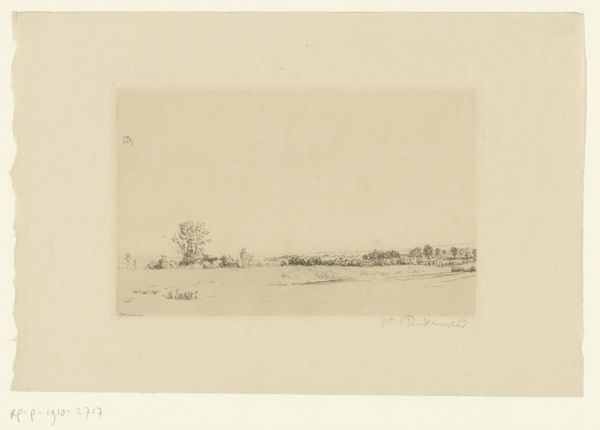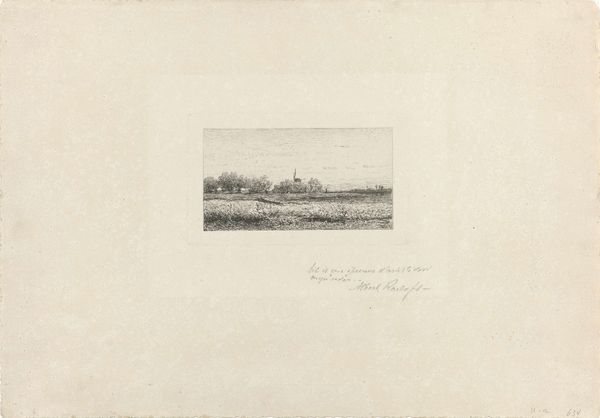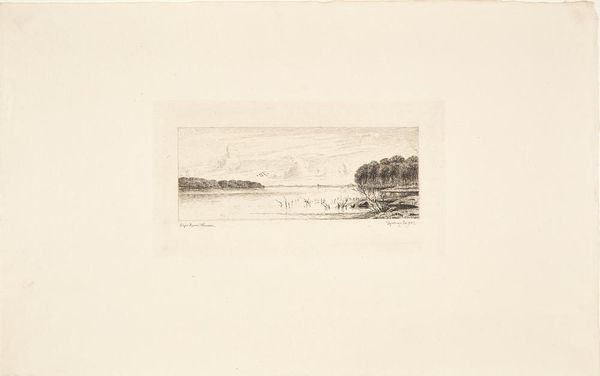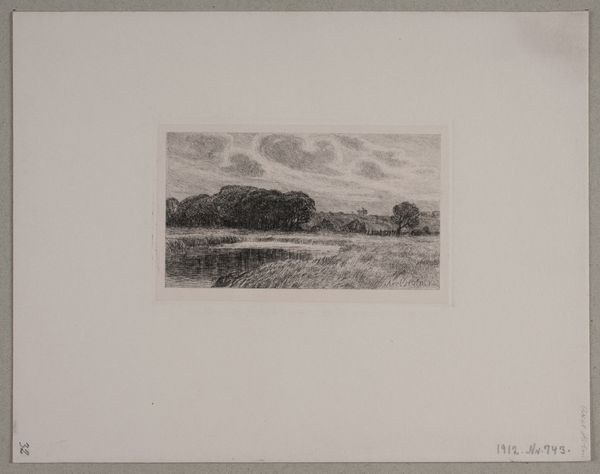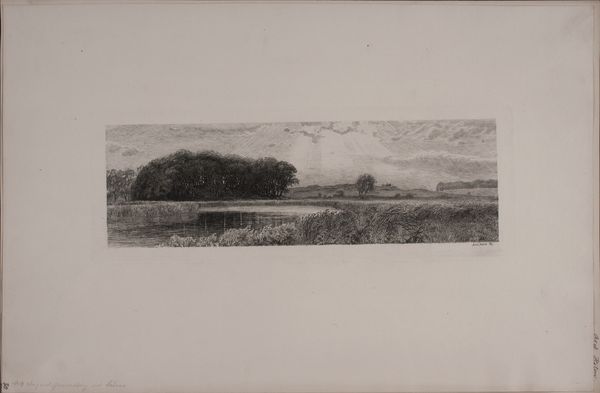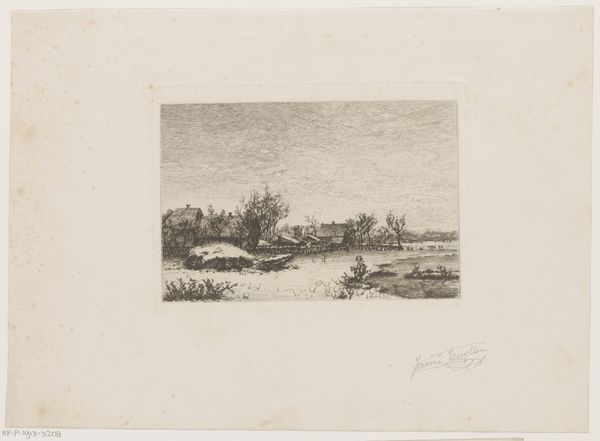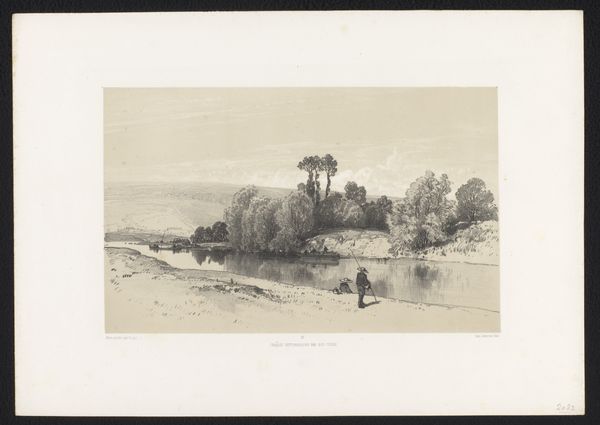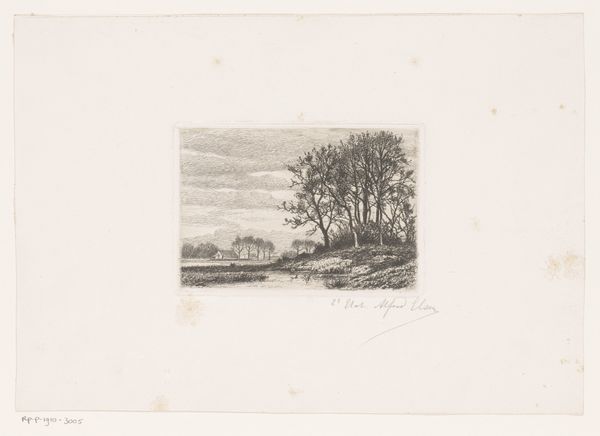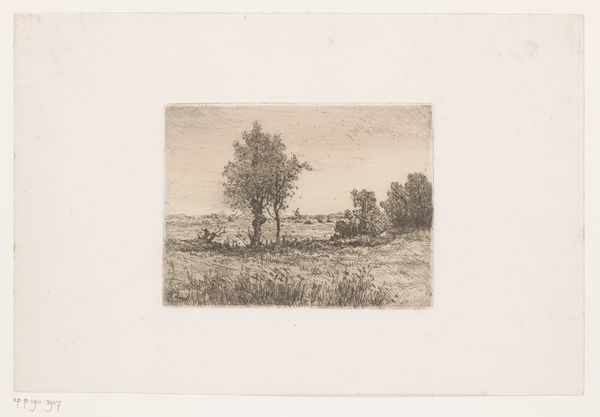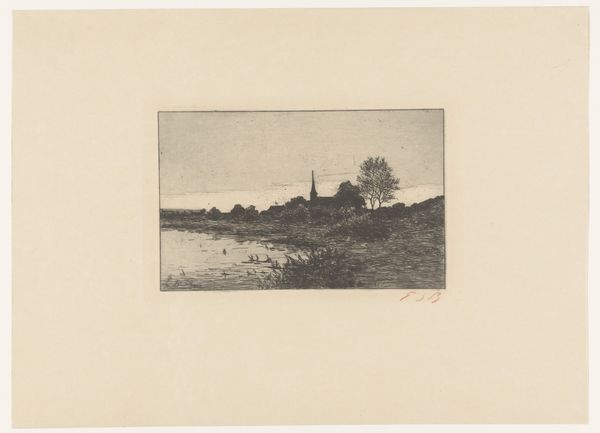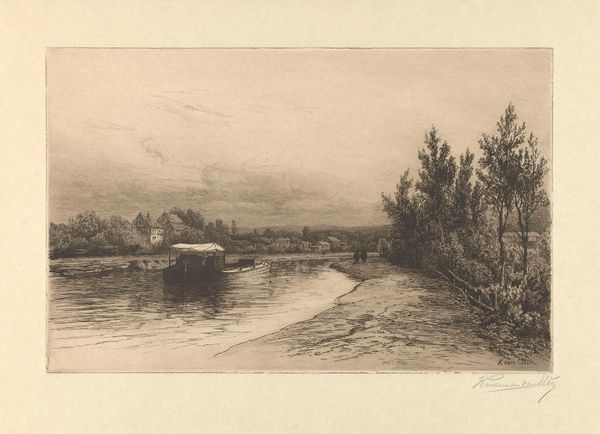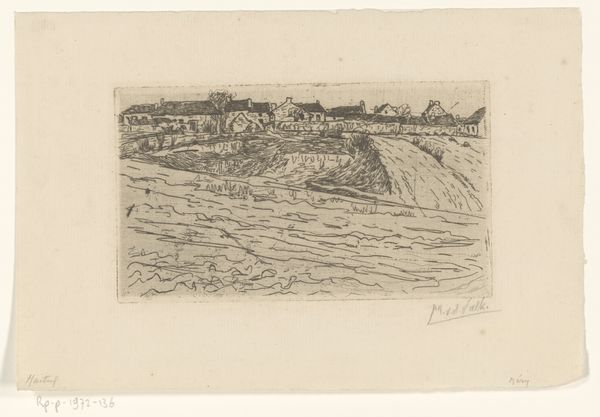
drawing, print, etching
#
drawing
# print
#
etching
#
landscape
#
pencil drawing
#
realism
Dimensions: height 156 mm, width 219 mm
Copyright: Rijks Museum: Open Domain
Johan Conrad Greive made this river landscape near Bemmel using etching, a printmaking technique with a fascinating history. The etching process involves covering a metal plate with a waxy, acid-resistant layer. The artist then scratches an image into this layer, exposing the metal beneath. When the plate is bathed in acid, the exposed lines are eaten away, creating grooves. These grooves hold ink, which is then transferred to paper under high pressure, resulting in a print with delicate, precise lines. The etched line is so powerful because it can be endlessly reworked. It allowed artists to mimic the subtleties of drawing, and to reproduce images cheaply and at scale. These prints were made for a rising middle class who wanted access to art, but could not afford paintings. So, next time you see an etching, remember the skilled labor, the careful process, and the social context that brought it into being. It's a beautiful example of how art and industry can come together.
Comments
No comments
Be the first to comment and join the conversation on the ultimate creative platform.
